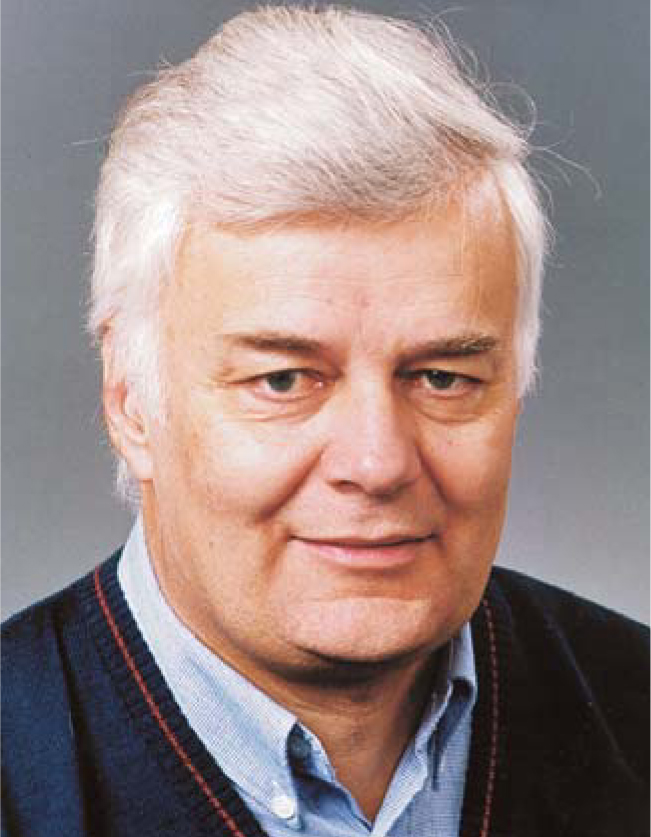Hans Jürgen Coufal
DOI: 10.1063/1.2709568
Hans Jürgen Coufal, a skilled, versatile experimental physicist and technology visionary at the IBM Almaden Research Center, died of cancer on 19 September 2006 in San Jose, California.
Hans was born on 17 January 1945 into a family of watchmakers living in the small town of Ruhla in Thüringen, Germany. For his graduate studies, he joined Edgar Lüscher’s group at the Technical University of Munich (TUM) and graduated with top honors in physics, receiving his PhD in 1975. His thesis work, concerning the thermal expansivity and compressibility of rare-gas solids, drove his later interest in matrix-isolation spectroscopy as a technique for studying optical absorption and the electron spin resonance of isolated atoms. He studied potassium atoms produced by neutron irradiation of solid argon and trapped at multiple sites in the matrix. During several years on the faculty of TUM and the Free University of Berlin, Hans was active in the study of various solid-state physics phenomena, including a thorough analysis of the potential of photoacoustic spectroscopy.
A productive and exciting postdoctoral year in 1978 at the IBM Almaden Research Center and the eventual offer of a permanent job at IBM, not to mention the California sunshine, convinced Hans and his family to emigrate to the US in 1981. During his postdoctoral year, Hans brought his matrix-isolation spectroscopy experience to bear on the IR studies of chemical intermediates encountered during the beam irradiation of precursor species important in photo- and electron-beam lithography.
Soon after becoming a permanent member of the IBM research staff, Hans built up what was to become his major physics research interest for a number of years—photoacoustics and photothermal phenomena. His pioneering work on ultrafast sensors for lasergenerated ultrasound, surface acoustic waves, and the concept of an ultrafast and sensitive pyroelectric calorimeter for thermal wave detection is particularly noteworthy and has applications, for example, in thermal transport in ultrathin layers and across interfaces.
In 1994 Hans took up a new challenge, heading IBM’s research team in holographic data storage as part of two large university–industry consortia. Through his leadership the team developed a state-of-the-art materials tester that became the backbone of various data-storage programs he oversaw. The tester was used to evaluate new holographic storage materials developed by members of the consortia and by other, external partners. As the emphasis moved to enabling technologies such as lasers, CCD cameras, spatial light modulators, and optics, Hans had a guiding hand in almost every phase of the projects. Test beds were created to demonstrate high storage capacity, high data rate, and novel search functionality. In 1996 Hans became co-principal investigator of the consortia and was responsible for integrating the various technologies. The integration was done successfully with the demonstration of a fully functional holographic storage system for the Defense Advanced Research Projects Agency. The National Storage Industry Consortium acknowledged his work in 1999 with its Leadership Achievement Award.
Hans became manager of IBM Almaden’s entire science and technology function in 1996. Under his leadership Almaden researchers had several highly visible successes in such areas as imaging a single electron spin, magnetic tunnel junctions, and magnetic resonance of a single spin and the first experimental demonstrations of quantum computing algorithms.
Recognizing the need for IBM research to collaborate more closely with both academia and government agencies, Hans helped form three new university–industry consortia. The first, established in 1994, was the NSF-funded Center on Polymer Interfaces and Macromolecular Assemblies, with Stanford University; the University of California, Berkeley; UC Davis; and the Max Planck Institute for Polymer Research in Mainz, Germany. This was followed by the NSF-funded Center for Probing the Nanoscale, with numerous US universities, and SpinAps, a center for spintronics, with Stanford; both were announced in 2004.
Following his strong convictions about the fundamental limits of present-day technologies, especially in the semiconductor world, Hans welcomed the opportunity in 2005 to become the founding director and technical group leader of the Nanoelectronics Research Corporation. The Semiconductor Industry Association created the NRC to run the Nanoelectronics Research Initiative, which sponsors university research in nanoscale technologies. Three new nanotechnology research centers were formed during Hans’s all-too-brief NRC tenure.
In 2004 the president of Germany awarded Hans the Bundesverdienstkreuz, the German counterpart to the British Order of Merit, for his numerous contributions.
Hans passionately communicated his enthusiasm for science, technology, and a bright future. He took particular joy in inspiring young people to achieve and excel; he spoke to students and mentored young scientists both in the US and abroad. Equally passionate in pursuing his many hobbies, Hans collected miniature models of historic train steam engines and historic computing equipment.
An excellent scientist who also had a keen appreciation for the benefits of applying research results toward advancing commercial technology, Hans was rare and ahead of his time. The international science and technology community has lost a revered colleague and effective leader.

Hans Jürgen Coufal
IBM ALMADEN RESEARCH CENTER

More about the Authors
Eric Kay. IBM Almaden Research Center, San Jose, California, US .




